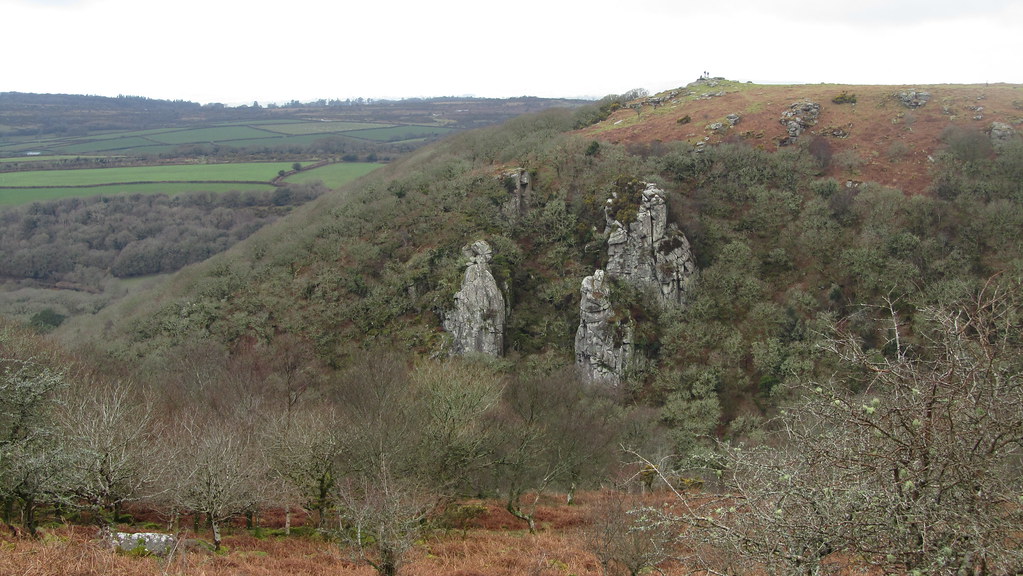Back in August 2015, I made my first visit to this south-western corner of the national park. In the height of summer, the weight of growth in the woods, the height of the bracken, made it difficult to explore and I had to give up on any attempt of reaching Shaugh Beacon from the path on West Down. I wagered that a trip in the cooler months might prove more fruitful.
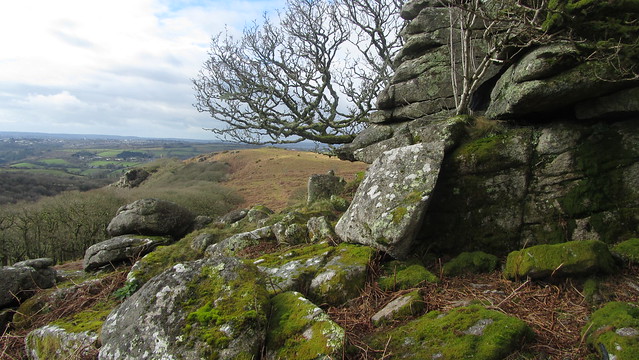
Here I was, in March 2017, back to see what the bracken and the woodland canopy had been hiding. Parking at Cadover Bridge, I crossed the Plym and stretched my legs up onto Wigford Down, in a chill breeze that carried some drizzle.
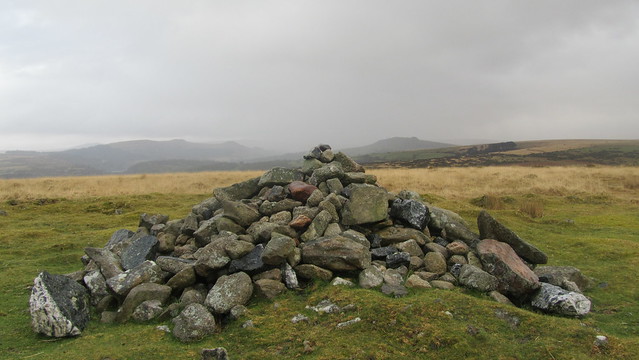
The cairn and small pond at the highest point of Wigford Down are little reason to linger, especially in the wind and rain. I reset my compass and moved on.
Callisham Tor is a bit out of the way for a circular route, but I hadn’t visited before so it had to be done. I headed, north-west, to the road and followed it to the junction, turning right onto Callisham Down. Following the road some more round a sharp left turn, I reached a marked footpath. It goes, diagonally, across a field that begins to drop down the hill, when you come to a stile in the corner, right beside the wall that incarcerates the outcrop.
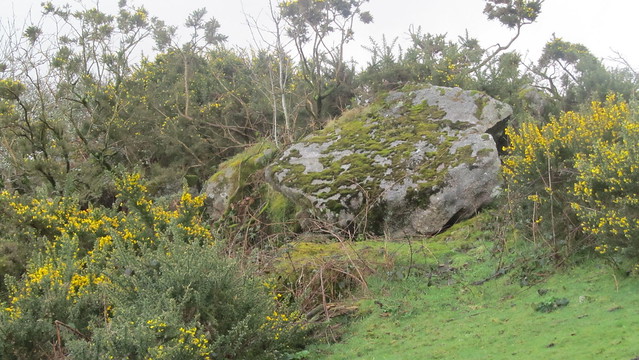
From what I could see, hidden behind the gorse and tangle of trees, this is a small outcrop, with some clitter. Despite being private land, the temptation is there to cock a leg over the low fence but I didn’t have my section of old foam camping mat to beat the barbed wire on this trip, so I kept the right side.
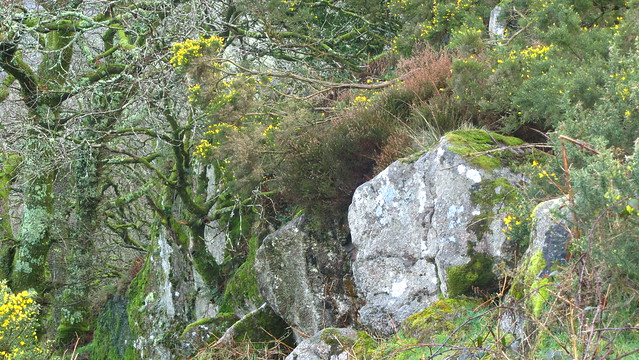
I returned the way I came, to Wigford Down, ascending it further along the road to Goodameavy. By now, the sun was out, temperatures had risen and whilst wondering where this promised band of heavy rain had wandered off to, I wasn’t complaining!
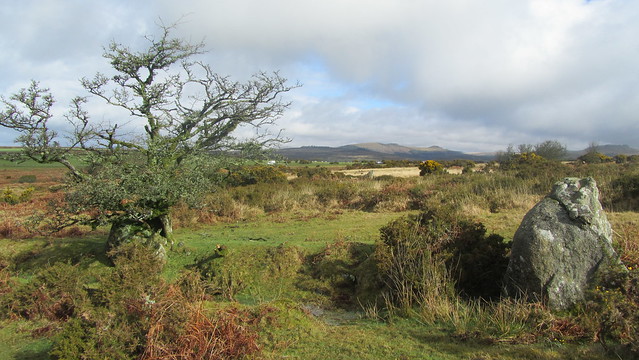
I made my way to the wonderful Cadworthy Tor. Such a contrast to my previous visit, in that more of the granite was exposed underfoot and it could be enjoyed in all its glory.
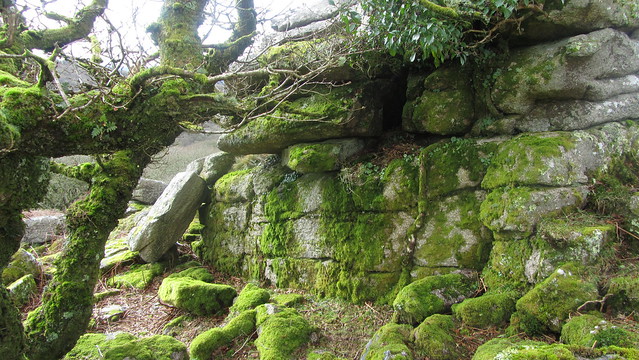
Cadworthy consists of two main outcrops and plenty of moss cladded clitter around it. Some gnarly stunted trees add to its charm, as does spectacular views over the Plym valley between Cadover and Shaugh Bridges. And there, across the valley, on the opposite hill, I could even see Shaugh Beacon. A good sign of things to come!
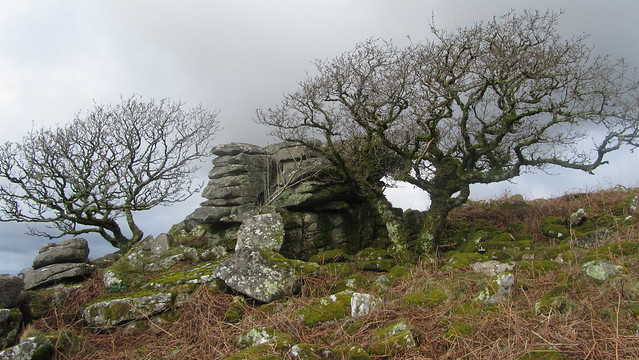
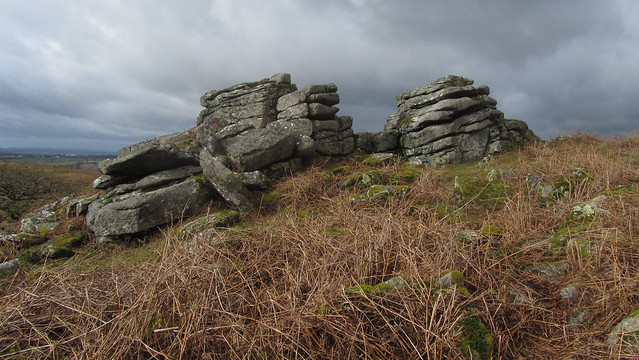
Following the ridge to Dewerstone Hill, I reached the outcrop on the summit; a fine one, but modest in comparison to the crag tumbling down the dramatic edge, to the south.
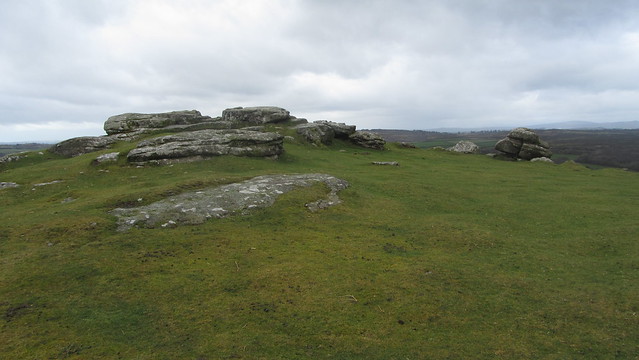
This tor is not without its interests. On the rock there are examples of some 19th century graffiti and a simple memorial to the poet Noel Thomas Carrington, who died on the 2nd September 1830.
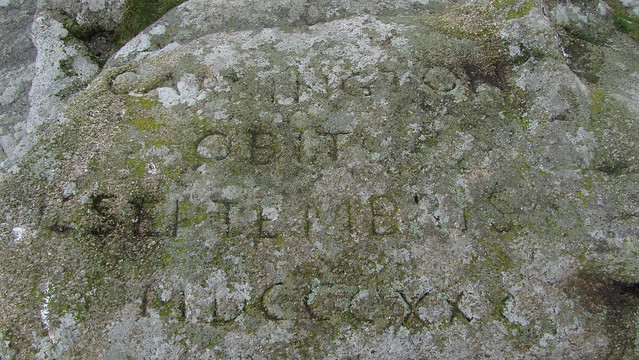
The start of the route down into the woods, passing the crag of Dewerstone Rocks, was visible without the canopy. I stepped into Dewerstone Wood, spotting a side access to the top of the crag where my lack of head for heights soon surfaced!
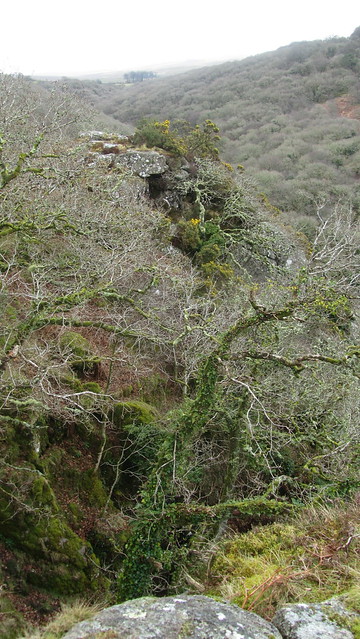
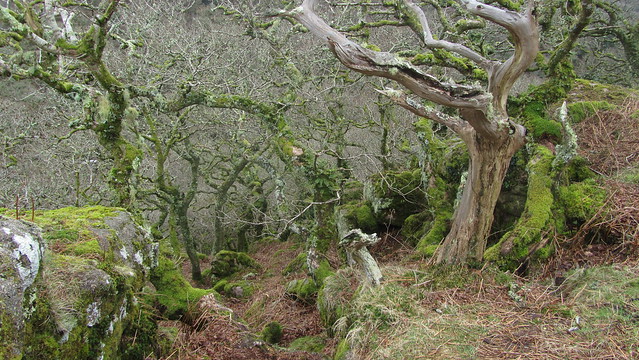
I stayed as long as my wobbling legs allowed me, enough to appreciate the drop to the Plym, and returned to the steep path down to the valley floor.
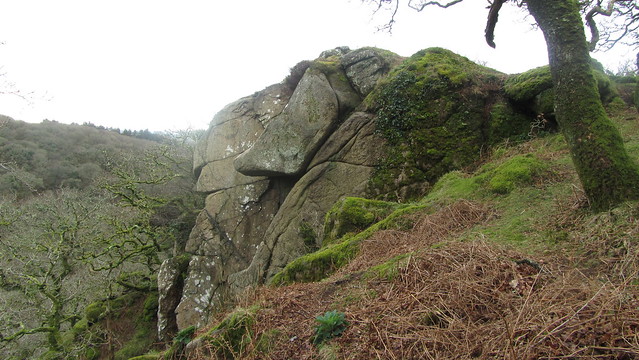
The route down has some impressive outcrops to spot within the woods. It pays to take your time and look up from the incessant search for your next footfall. Last time, my legs felt the descent, but on this occasion, armed with the knowledge of the trail, they faired better.
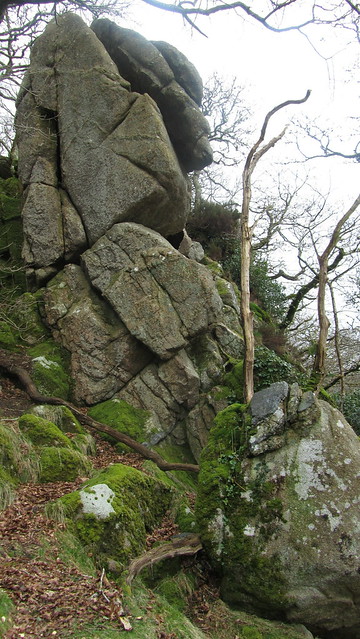
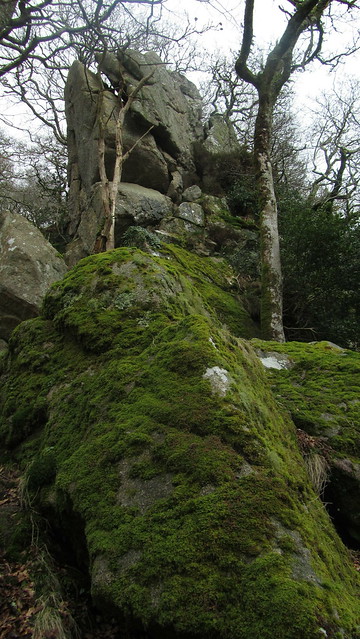
I eventually reached the old granite tramway, that once led to a quarry on the side of Dewerstone Hill. It makes the last metres to the river a more leisurely affair. I also noticed a few more outcrops at the base of the hill.
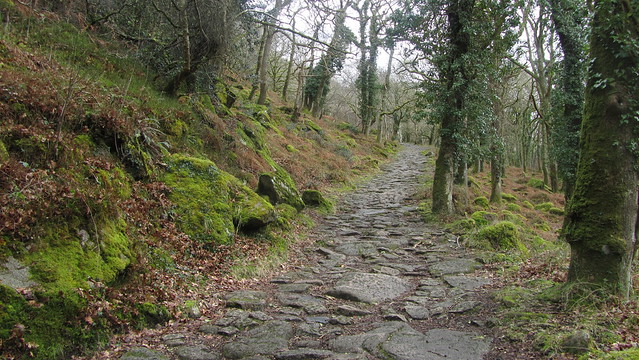
The lower outcrop was the more prominent; a pointed pile with more granite behind, reaching up as far as I could see, likely to the summit of Dewerstone Hill.
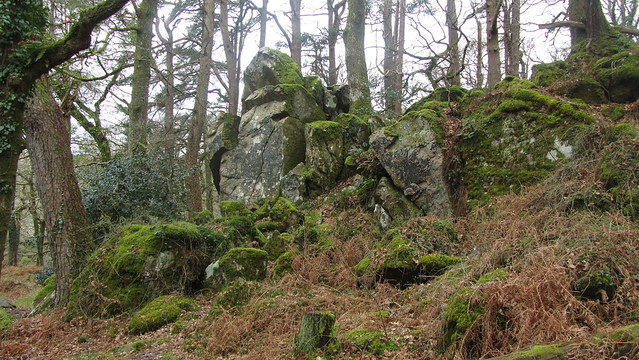
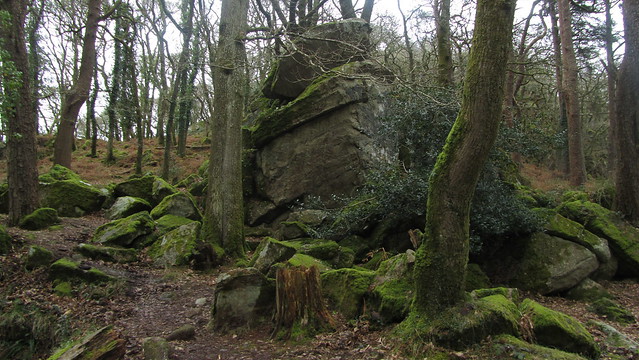
I joined the banks at picturesque Shaugh Bridge, where the River Meavy flows into The Plym. I planned to stop for lunch here but a short shower passed over and that was enough to encourage me to continue.
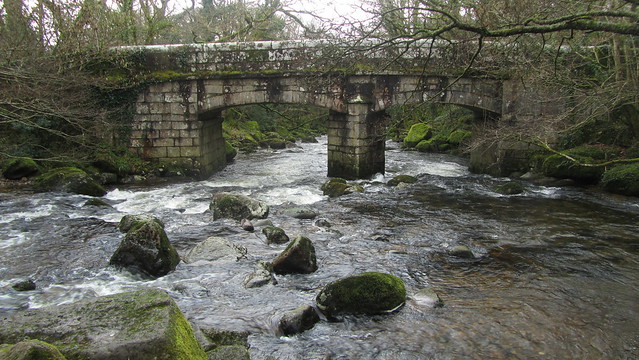
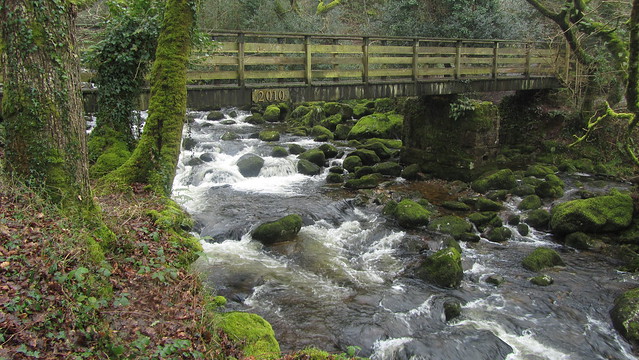
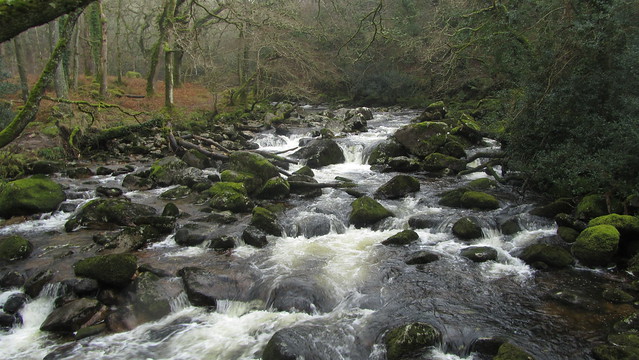
I went over the footbridge, through the small car park, with its ruins of the kilns for the Shaugh China Clay Works and up to West Down.
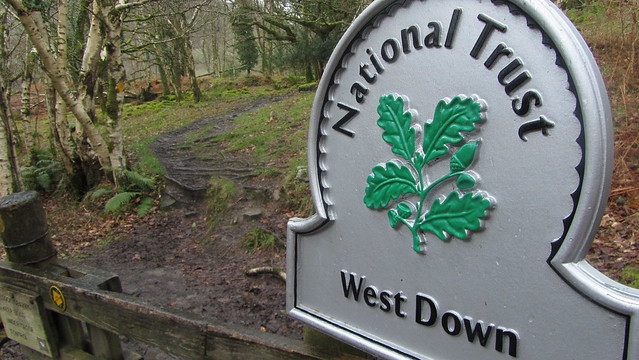
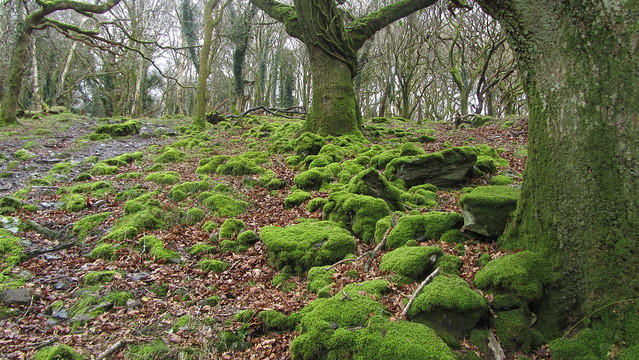
The valley side, its position being on the north of the down, meant there is plenty of shade and the lichen and moss thrive, creating a beautiful scene of vibrant greens even without the canopy. I followed the path up, spotting a large area of significant rock piles that I had failed to notice when I was here in August. I took a bit of time to investigate, finding three higher outcrops, cascading down the valley side, and thought them worthy enough to name them “West Down Piles”.
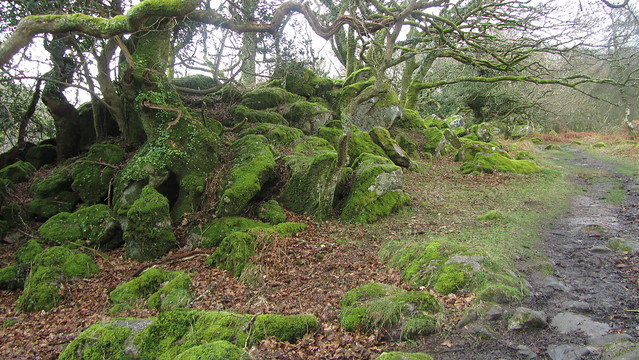
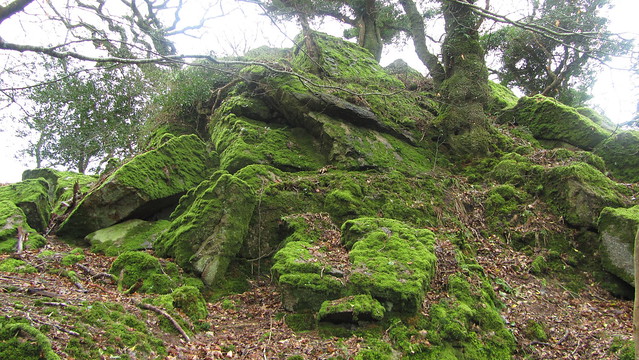
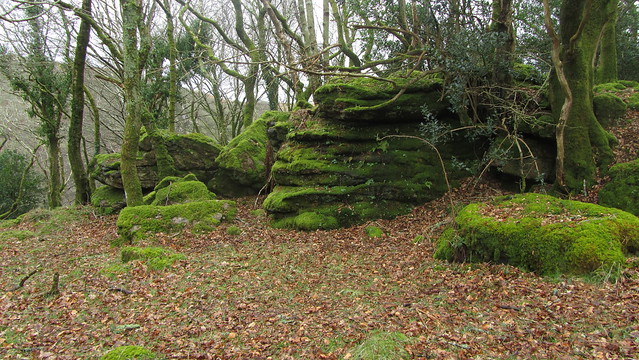
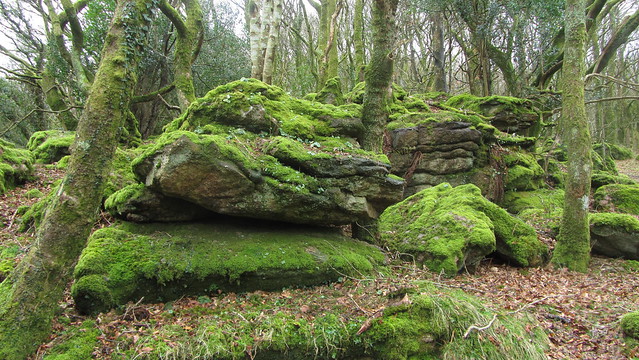
Unlike my last visit, I took the footpath that contours around the edge of the open down to Shaugh Prior. I only followed it half way, as a route up was obvious and I wound my way up to the tor I missed; Shaugh Beacon.
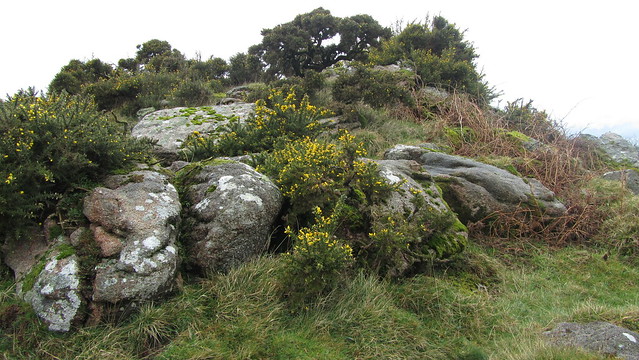
This is a small summit outcrop, with a tiny rock basin, but commanding great views of Shaugh Prior to the south, Plymouth to the south-west, and Dewerstone Hill to the north.
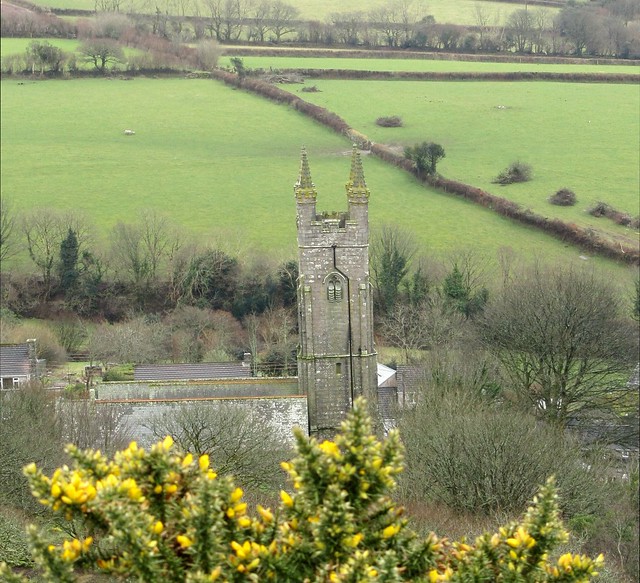
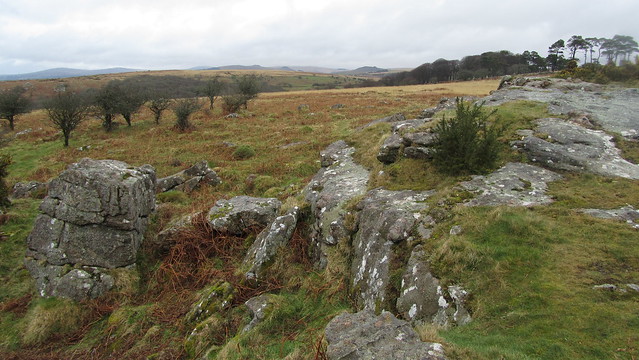
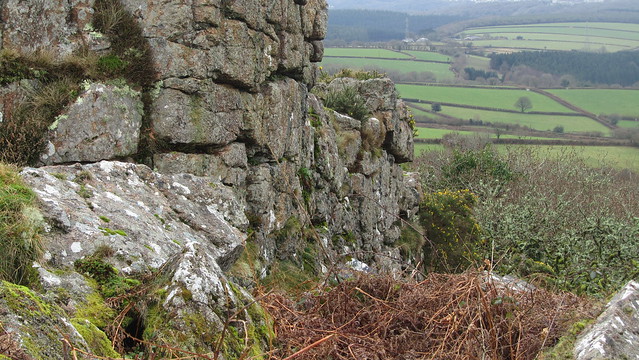
I went north, down the hill to join the footpath that runs through North Wood, to Cadover Bridge. As I dropped down, where bracken had barred my way in the summer, I could marvel at the magnificent site of Dewerstone Rocks, naked and exposed at this time of year. This location really is the best place to admire this jewel.
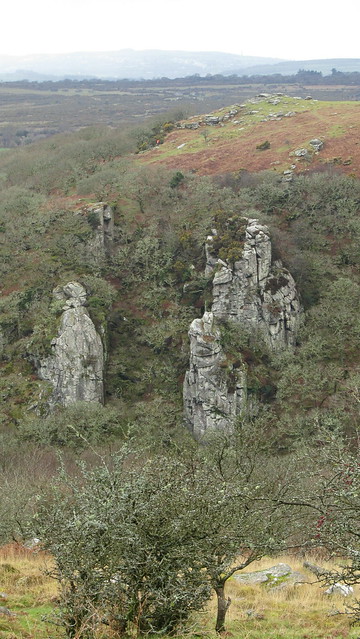
I reached the footpath, with the old clay pipe that runs its length; a remnant of the industry that pumped liquid clay to the kilns back at Shaugh Bridge.
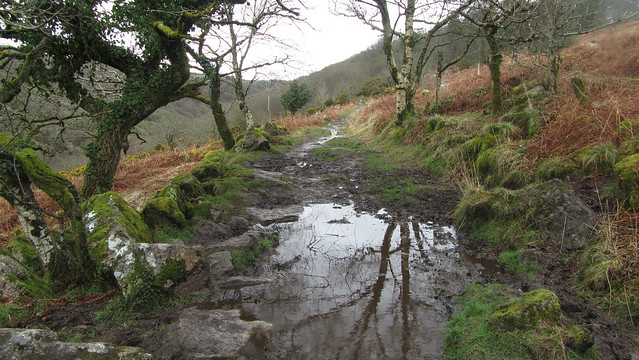
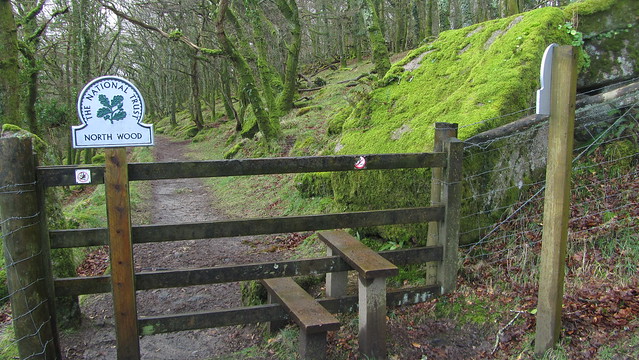
I passed over the stile, into North Wood, and the woodland lit up in a brief period of sunshine.
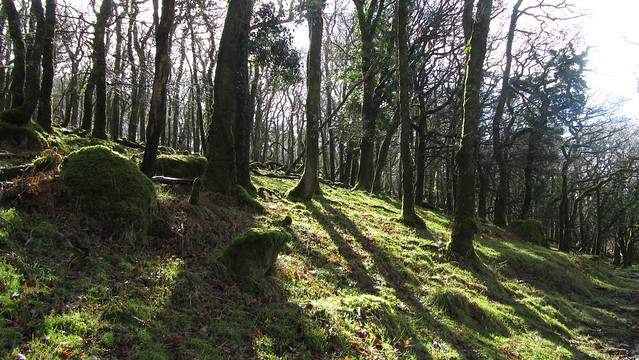
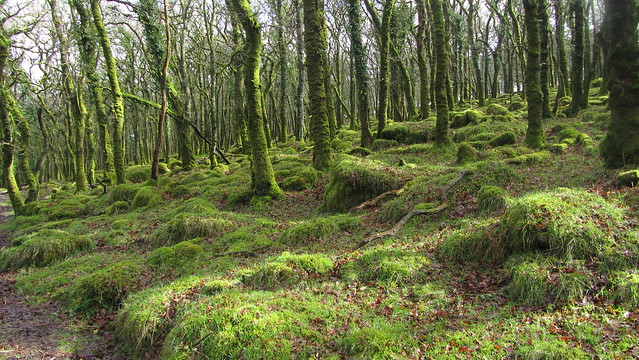
I dropped down to the Plym. I was close to the end of my walk, but still, I lingered here, finally eating my lunch and taking in the scene.
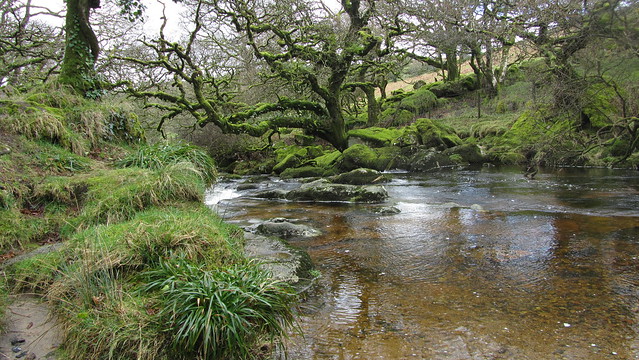
Back up to the path, it isn’t long before you are through another stile and out in the open moor once again. Beside the Plym, you come to the car park just before Cadover Bridge.
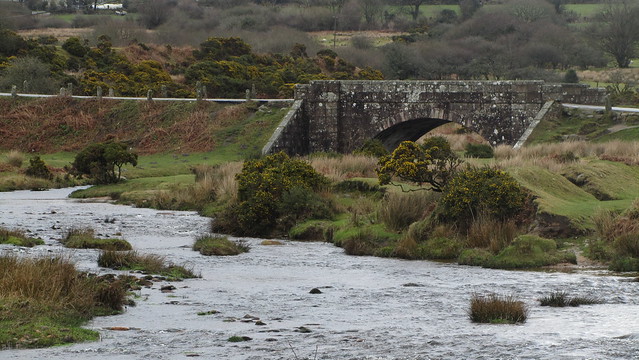
I loved this short little walk once again, firmly becoming a favourite. Having experienced it in Summer and the tail end of Winter, I’ll be back here at Easter to see what Spring brings to this wonderful corner of Dartmoor.

